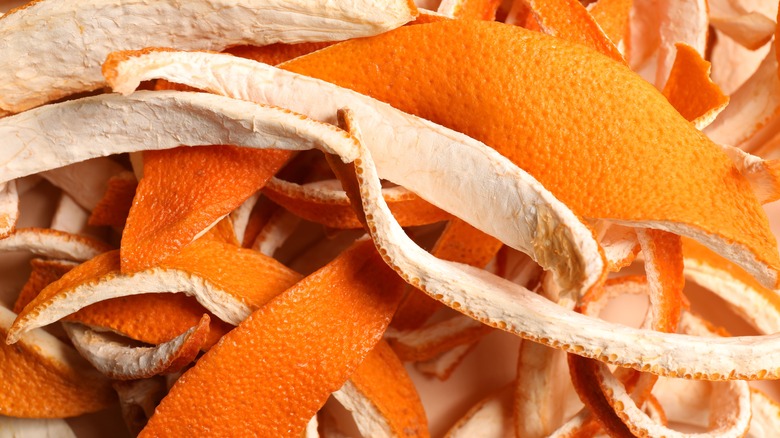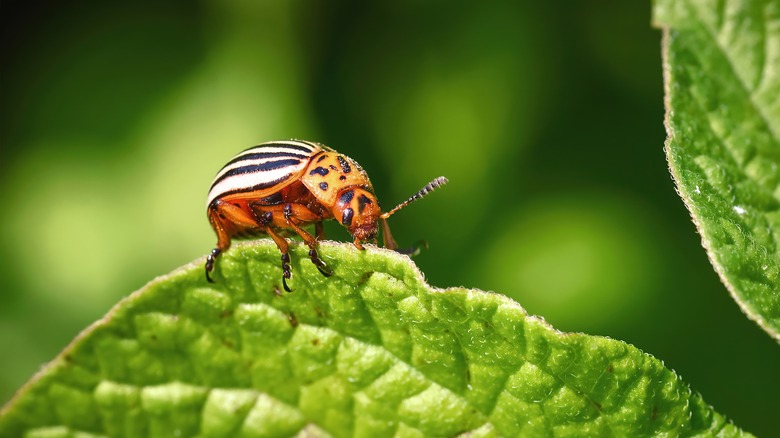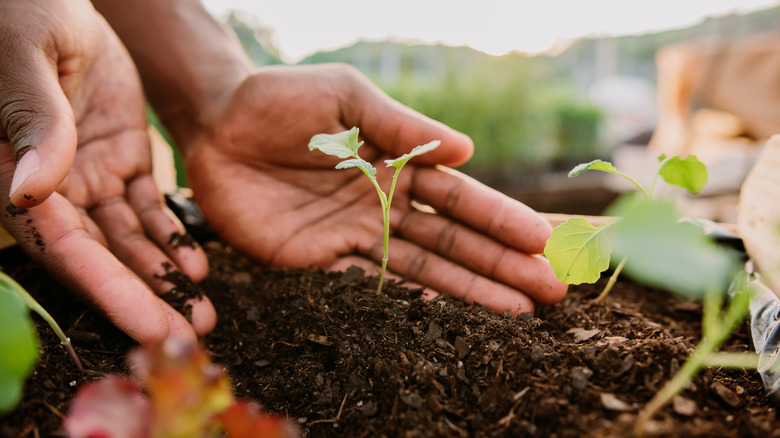Why Adding Orange Peels To Your Soil Should Be Your Next Gardening Move
Beyond their tangy taste and refreshing citrus scent, which actually makes for great diffusers or perfumes, orange peels harbor a wealth of benefits for your garden's health and vitality. While they're often discarded after juicing or snacking, gardeners should really think twice before throwing out these citrus rinds. Before you dispose of those citrus skins, ponder the abundant opportunities they offer for elevating your garden into a flourishing haven of lushness and vitality. These humble yet potent allies hold untapped potential as natural solutions in your gardening endeavors.
Integrating orange peels into your gardening regimen not only diminishes waste but also nurtures a greener, more sustainable garden environment by reducing the need for chemical pollutants. Keep reading to discover the numerous ways orange peels can enrich your plants, soil, and overall garden well-being, encouraging you to rethink tossing them aside and instead utilize their potential for a greener, livelier garden.
Repel pests
It seems a little paradoxical that the sweet scent of orange rinds could serve as a natural deterrent to pests. And yet, it's true. A study published in Phytoparasitica found that the essential oil in orange peels kills pests like aphids, ants, and beetles when they ingest it, leading them to develop an evolutionary behavior where they avoid areas with such scents. However, it's not only small insects that citrus deters from your garden. Even larger visitors, such as cats, are discouraged (although consuming the rinds won't physically harm your furry friends!). On top of that, research in the Momona Ethiopian Journal of Science suggests that orange peel extracts do not contribute to the development of resistance that is observed with conventional synthetic pesticides, providing another compelling reason to opt for this green solution. So, all in all, using orange peels offers a natural and eco-friendly method to safeguard your plants from pests.
So, how exactly do you use orange peels in your garden? To begin, gather leftover orange peels, ensuring they are free of any fruit flesh remnants that might inadvertently attract pests. Scatter the rinds around your garden soil or focus them near plants that have been particularly susceptible to pests. You can also bury them slightly inside the soil. The rinds are only effective so long as they are still moist, so the peels need to be replaced after "they have dried out," according to garden expert Kevin Rodrigues (via Homes and Gardens).
Nourish your soil
Burying orange rinds into your soil has the added benefit of fertilizing your soil. Orange peels are rich in nutrients like nitrogen, phosphorus, and potassium, which are vital for plant growth and health. As gardening expert Katie Kulniece explains, incorporating them into your soil allows these nutrients to be released, enhancing the soil's health (via The Sun).
To utilize orange peels as fertilizer, you can chop them into smaller pieces and place them into your garden's soil. Alternatively, try grinding the peels into a powder for even easier application. For a simpler and more effortless approach, scatter leftover orange peels directly into your garden. As the peels decompose, they will release nutrients into the soil, providing a slow-release fertilizer for your plants. Adding a bit of soap can aid in the biodegradation of the peels, facilitating the fertilization process.
It's crucial to remember that while orange peels offer valuable nutrients to the soil, moderation is key to avoid over-fertilizing your plants. Excessive citrus in the soil can lead to soil acidification, which, although beneficial for some plants, can disrupt the pH balance when overdone, turning your grass yellow or potentially harming more sensitive plant species. Start with a small amount of orange peels and monitor your plants' response to determine the most appropriate dosage.


